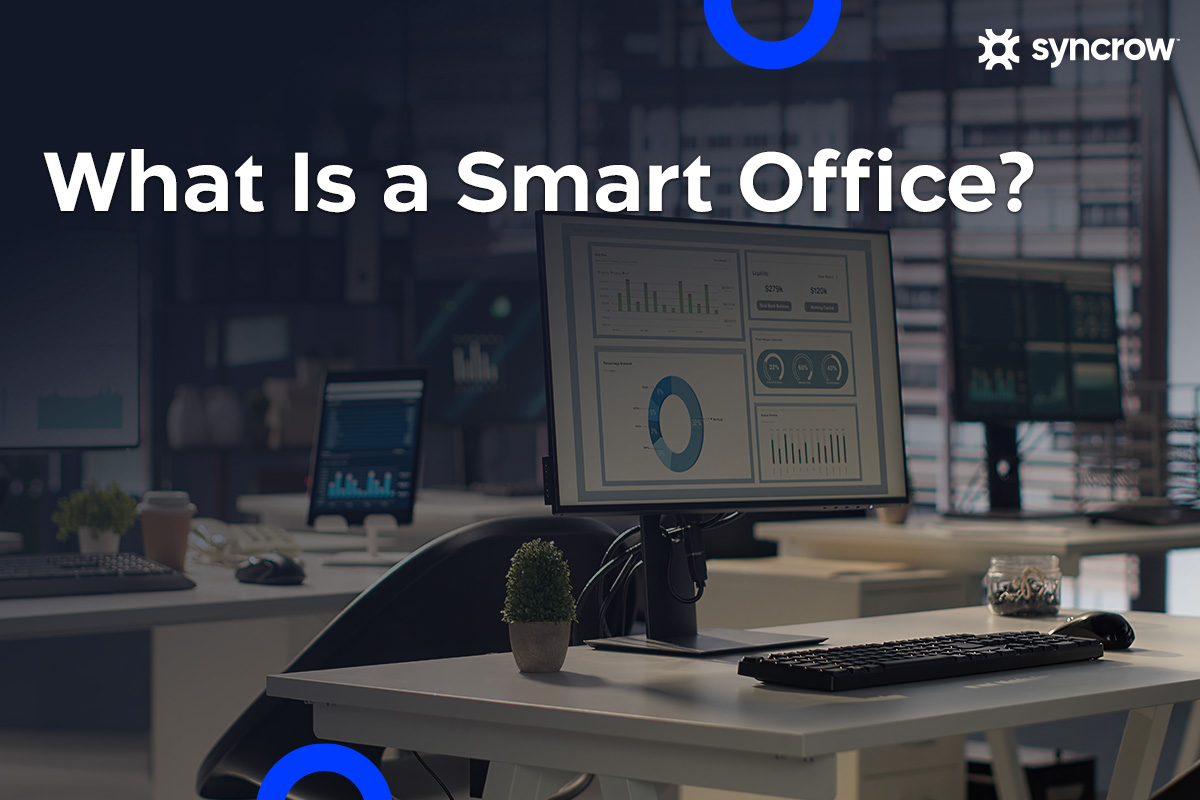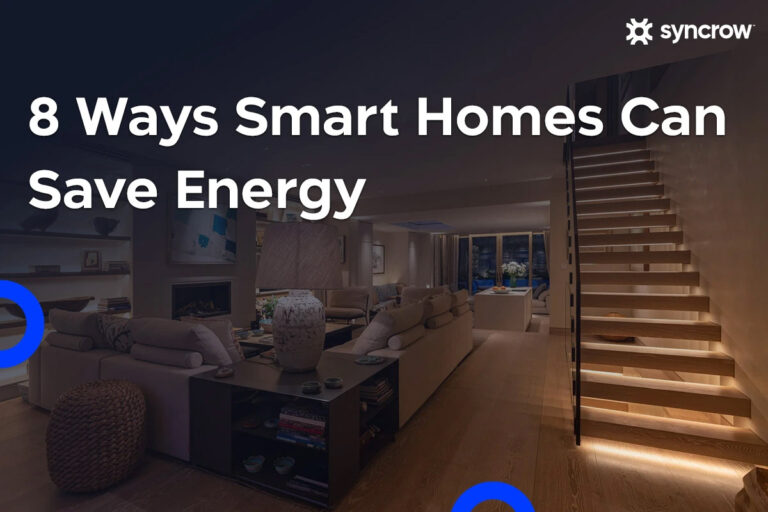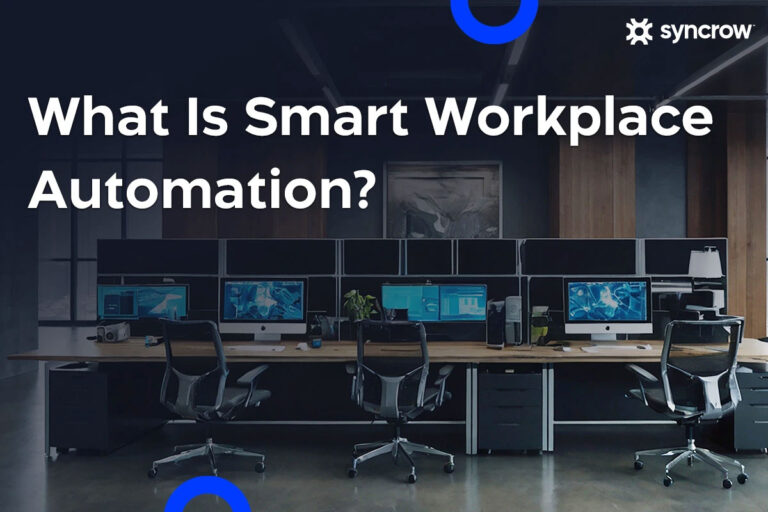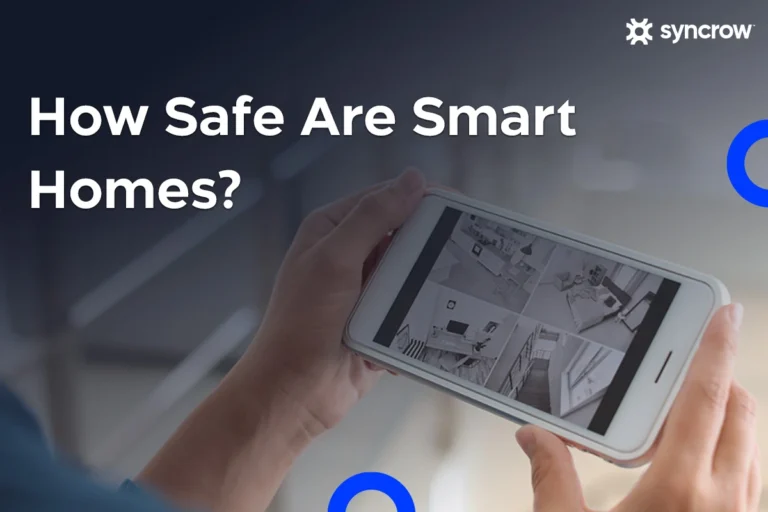The smart office has rapidly evolved from an emerging trend to a strategic priority for forward-thinking businesses. As companies look to enhance operational efficiency, attract top talent, and lure remote employees back to the office, workplace technology is playing a central role.
Traditional office layouts with rigid infrastructure are giving way to adaptive, smart environments. By leveraging IoT, modern workspaces are transforming into intelligent ecosystems that improve employee experience and deliver measurable value for businesses.
In this blog, we dive deep into the concept of smart office, the key benefits for employees and companies, and what technologies are shaping the future of the modern workplace.
What is a smart office?
At its core, a smart office is a technology-enabled workspace that leverages Internet of Things (IoT) devices, cloud platforms, and data analytics to enhance how people work and companies manage resources. It connects various systems – lighting, HVAC, and security systems – into a centralized, responsive network that can be monitored, managed, and optimized.
IoT is the beating heart of the smart office. Sensors placed throughout the office space collect data on occupancy, temperature, air quality, and energy consumption. This data feeds into platforms that automate adjustments, provide insights, and enable predictive maintenance.
For example, smart meeting rooms can automatically cancel a booking if no one shows up, and lighting can adapt based on natural daylight levels.
The evolution of the smart office reflects the changing needs of the modern workforce. Today’s employees expect flexible, safe, and comfortable environments that support productivity and wellbeing. Businesses, in turn, are under pressure to reduce costs, achieve sustainability goals, and attract top talent.
Smart office solutions deliver on all fronts, enabling a better balance between performance and experience.
What are the benefits of smart offices?
A smart office goes beyond individual technologies; it delivers tangible business outcomes. Below are key advantages that position smart workplace solutions as a strategic investment:
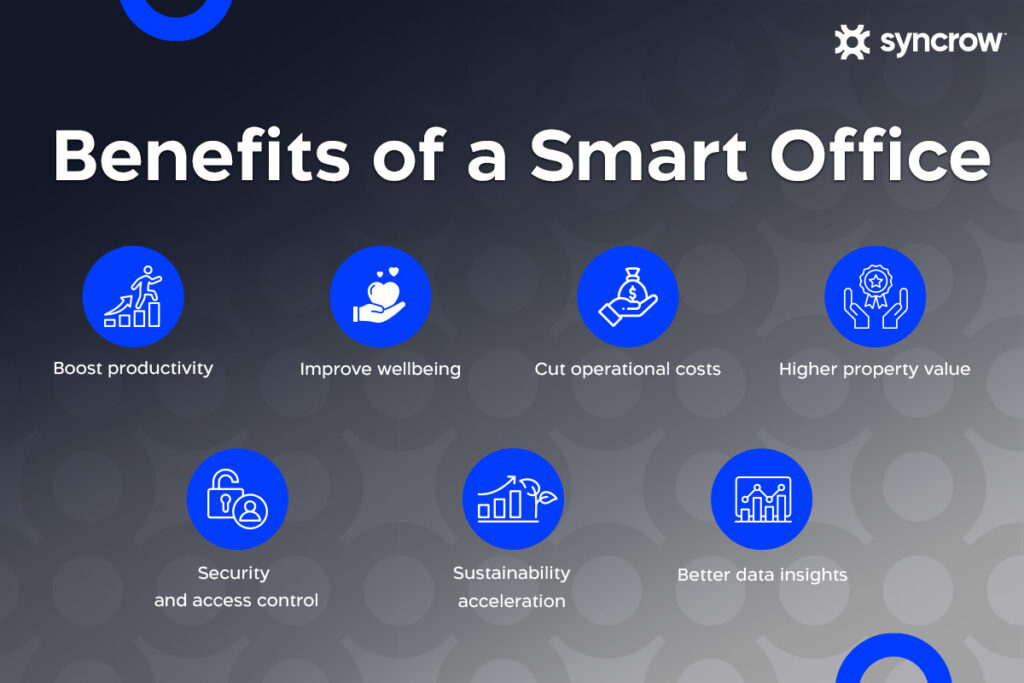
Boost employee productivity and efficiency
Smart offices eliminate friction in everyday tasks. Automated lighting and AC control, real-time desk and meeting room availability, and AI-powered scheduling reduce wasted time and improve workflow. Employees spend less time managing their environment and more time focused on meaningful work.
Improved employee comfort and wellbeing
Advanced air quality monitoring ensures optimal indoor conditions, while personalized environmental settings can be tailored to individual or team preferences based on room usage patterns. Enhanced HVAC management enables better airflow and temperature control, supporting thermal comfort throughout the day.
Together, these features contribute to a more productive workplace and help reduce absenteeism, fatigue, and employee dissatisfaction.
Operational cost savings and resource optimization
Intelligent systems monitor and optimize energy usage, helping companies lower utility bills. HVAC and lighting systems can adjust automatically based on occupancy or time of day. Predictive maintenance also minimizes downtime and repair costs by identifying issues before they become serious.
Higher property value
Buildings equipped with smart office technologies are more attractive to tenants and investors. They offer operational efficiencies, enhanced security, and a modern aesthetic that aligns with evolving workplace expectations. This is especially important in places where the real estate market is booming, such as the UAE and Saudi Arabia.
Security and access control
Smart access control systems use biometrics, mobile credentials, or facial recognition to secure the workplace while enabling seamless entry for employees and visitors. Integrated surveillance and alarm systems can also provide instant alerts for suspicious activity or system failures.
Sustainability acceleration
Smart offices play a pivotal role in advancing sustainability goals through intelligent resource management. Automated systems optimize energy and water usage, reduce waste, and monitor carbon emissions. These capabilities not only support environmental targets but also help organizations meet evolving regulatory expectations.
In regions like the UAE, where the government increasingly requires buildings to report sustainability progress and green building developments, smart office solutions offer a proactive approach to compliance. Integrating these technologies also helps businesses get global certifications such as LEED or WELL, reinforcing their commitment to responsible, future-ready operations.
Data insights to make informed decisions
Smart offices generate a continuous stream of data that can be analyzed to inform business decisions. From space utilization to environmental conditions, insights help leadership streamline workflows, redesign floor plans, and tailor experiences to team needs.
Smart office technologies used in the workplace
Behind the scenes of a smart office are integrated technologies that bring everything to life. Here are the most commonly used systems enhancing today’s workspace:
Smart lights and temperature controls
Smart office environments leverage devices like smart lights, switches, and thermostats that can be scheduled or manually controlled through mobile apps or centralized platforms. These systems allow facility managers or employees to adjust lighting and temperature remotely, whether to optimize energy use during off-hours or to personalize settings for specific zones.
Security and access control systems
Gone are the days of swipe cards and manual logs. Today’s systems use mobile credentials, facial recognition, or biometric scans to manage entry securely. Cameras and smart locks work in tandem with software to provide a robust layer of protection.
Room booking for a better workspace
No more double-booked meeting rooms or long walks to find a space. Smart room booking systems allow employees to check availability and reserve spaces instantly via apps or touchscreen panels outside each room.
Support tickets
Maintenance requests and support tickets can be automated and tracked within a smart office system. Whether it’s a malfunctioning thermostat or a broken switch, users can report issues quickly and follow resolution updates.
Smart alerts
From temperature spikes and gas leaks to occupancy anomalies, smart alerts ensure that facility teams are notified instantly. These alerts can be customized and escalated based on severity, ensuring swift action and minimal disruption.
IoT sensors and other devices
Devices like motion detectors, air quality sensors, and occupancy trackers can collect data that feed into centralized IoT platforms. This constant feedback loop allows the office to adjust conditions automatically or alert facility managers when manual intervention is needed.
Challenges in a smart office
While the advantages of a smart office are compelling, it’s important to recognize that transformation can bring challenges. Data privacy, integration of legacy systems, and upfront investment are common concerns.
Nonetheless, these are increasingly being addressed through standardized protocols, scalable platforms, and strong cybersecurity measures. Ultimately, with a strategic approach, these obstacles can be managed effectively without derailing progress.
How to transform into a smart office
Moving toward a smart office doesn’t happen overnight. It’s a process that starts with understanding your organization’s needs and goals. Here are a few steps to begin the transformation:
- Assess your current workplace setup: Identify inefficiencies and areas where smart technology can enhance outcomes.
- Define clear objectives: Do you want to reduce energy usage? Improve employee comfort? Enhance security? Your goals will shape your technology roadmap.
- Start small, scale smart: Begin with one or two key solutions like smart lighting or access control. Once you see results, you can scale to a full suite of smart office technologies.
- Choose the right platform: A modern, IoT-compatible, and secure platform is essential for managing your devices and data.
- Engage employees: Involve teams in the transformation journey to ensure adoption and maximize impact.
Why does the GCC need wider smart office adoption?
As a regional business hub, the UAE continues to attract global enterprises and foster innovation across sectors. However, as companies encourage employees to quit remote work and return to the traditional, onsite work environment, they’re facing new challenges tied to comfort, flexibility, productivity, and wellbeing.
According to data from Parisima Talent, 55% of UAE employees don’t prefer on-site work every day, and 47% are interested in wellness programs, highlighting a clear need for more responsive and employee-centric environments.
At the same time, issues like poor air quality, uncomfortable temperatures, and inadequate lighting are holding people back. A study from MDPI shows that 67% think the office is too cold, 63% report poor air quality, and 34% are uncomfortable with office lighting.
These pain points can be addressed with IoT-powered smart office solutions that allow real-time control over lighting, climate, and air quality, while also supporting personalized settings and space usage optimization.
Syncrow: Smart Office Solutions with Wellbeing in Mind
As a leading IoT automation solutions provider, Syncrow designs smart office solutions with a clear understanding of what modern businesses in the UAE and KSA need: flexibility, compatibility, and a deep focus on employee wellbeing.
Our smart technology is built to enhance existing office spaces through seamless retrofitting, eliminating the need for costly overhauls. Our solutions are designed to work within your current infrastructure while elevating performance.
Whether you’re transforming a single location or scaling smart office initiatives across multiple sites, Syncrow combines localized market insight with scalable technology to support your journey toward smarter, more sustainable workplaces.
Reach out to our team today for a free consultation.

